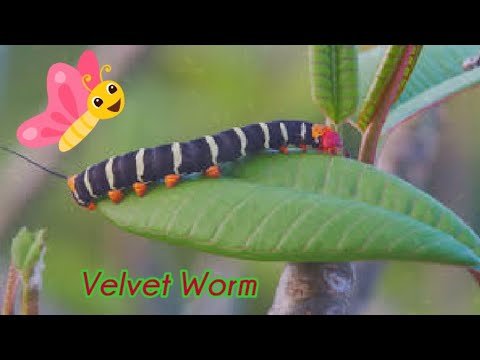
Velvet worms, or onychophorans if you want to get fancy, are known for their squishy bodies and charmingly quirky behaviors. They live in damp environments, often hidden under leaves or inside decaying wood. When it comes to capturing their prey, they use a unique method reminiscent of a superhero’s power—spraying sticky slime to trap unsuspecting insects. But the real magic happens once they’ve captured their meal. How exactly do these little critters digest their prey? Let’s dig into their fascinating digestive process!
What Are Velvet Worms?
To understand how velvet worms digest their prey, let’s start with what they are. These intriguing creatures belong to an ancient phylum, making them relatives of both arthropods and annelids. With their soft, segmented bodies and numerous legs, they look a bit like a mix between a caterpillar and a slug. You might find them in tropical and subtropical regions around the world, lurking in moist, leaf-littered environments.
Each velvet worm has a unique way of moving around, often using their many legs to crawl over surfaces. What makes them stand out even more is their slime glands, which can shoot out a sticky secretion. This slime can ensnare prey, preventing them from escaping. It’s pretty impressive when you think about it—who wouldn’t want to save a meal for later without putting in too much effort?
How Do They Capture Their Prey?
When velvet worms set out on the hunt, they’re armed with fascinating tactics. Once they spot an unsuspecting insect, they can shoot their slime up to a few feet away, wrapping their prey in a gooey trap. This slime isn’t just for show; it has adhesive properties that keep their meal from wiggling free. Honestly, it’s like a superhero using webbing to catch a villain!
After successfully capturing their prey, the velvet worm doesn’t dive in right away. Instead, it uses its specialized mouthparts to pierce the captured insect’s body. This step is crucial. It’s here that the real magic takes place.
The Role of Digestive Juices
Now, let me explain what happens after the capture. Once they pierce their prey, velvet worms release digestive enzymes directly into the insect’s body. This step is pretty unique compared to how most animals eat. Instead of chewing or breaking down their food before swallowing, velvet worms effectively *liquefy* their meals from the inside out. You might be wondering if this method has any advantages. Honestly, it helps them consume various prey without needing strong jaws or specialized teeth.
These enzymes start breaking down proteins and other organic compounds, making a sort of soup out of the prey. As the internal fluids of the insect mix with the digestive enzymes, the velvet worm can suck up the resulting nutrients through its mouth. It’s like sipping a smoothie made from your meal!
The Digestive System of Velvet Worms
So, how do velvet worms’ bodies handle this unique type of eating? After the nutrients are absorbed through their mouth, they move into a simple digestive tract. This tract is essentially a one-way street where the food passes through various sections for absorption.
The main parts of their digestive system include:
- Foregut: Where initial digestion begins.
- Midgut: The main site for nutrient absorption.
- Hindgut: Where waste is prepared for excretion.
The midgut is where the real action happens, as most nutrients are absorbed here. Velvet worms also lack a specialized stomach, which means their nutrients are quickly processed and made available for energy. It’s like having a fast-food nutrient delivery system right in their bodies!
Benefits of Their Digestive Method
You might be curious about why velvet worms have developed such a unique way of digesting their prey. One big advantage is efficiency. By liquefying their meals before consumption, they maximize their nutrient intake while minimizing food waste. They don’t need to chase down numerous meals, as one capture can provide a significant amount of energy.
Additionally, this method reduces competition for food. Since they can digest prey that might be too tough for others to handle, velvet worms can thrive in environments where food can be scarce. Here’s the thing—having a specialized way of eating allows velvet worms to adapt well to their habitats.
Velvet Worms and Their Ecosystem
In the grand scheme, velvet worms play a critical role in their ecosystems. By preying on insects, they help control bug populations. This balance is essential in many habitats, particularly in rainforests where they often reside.
Moreover, their unique digestive approach contributes to nutrient cycling. When they digest prey, they help break down organic materials, returning nutrients to the soil. It’s a win-win for the ecosystem, as every creature plays a part in keeping the environment healthy.
So, there you have it! Velvet worms are more than just fascinating little creatures; they have a unique and efficient way of digesting their prey. By using their slime to capture insects and then releasing digestive enzymes to turn those meals into a nutrient-rich soup, they’ve adapted perfectly to their environment.
Understanding how velvet worms digest prey helps us appreciate the complexity of ecosystems and the wonders of nature. Next time you hear about these quirky critters, you can share a little nugget of knowledge about how they thrive in their worlds. Life is full of surprises, and velvet worms are just one of the many marvels waiting to be discovered!
